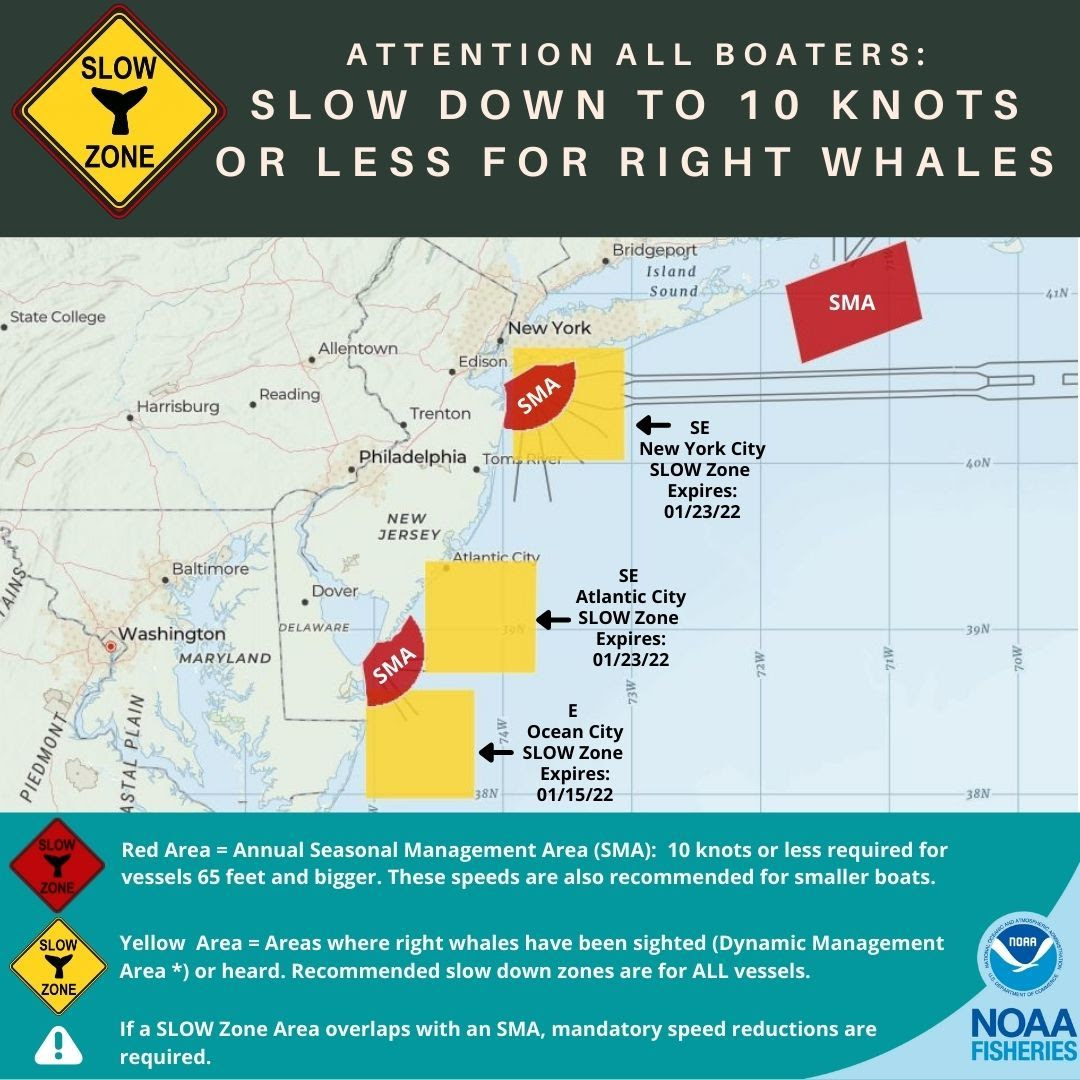New Right Whale Slow Zone Southeast of NYC and Extension of Slow Zone Southeast of Atlantic City, NJ
Posted
Last Updated
On January 8, 2022, the Woods Hole Oceanographic Institution’s acoustic array detected the presence of right whales Southeast of New York City, NY, and redetected the presence of right whales Southeast of Atlantic City, NJ. The right whale Acoustic SLOW Zones are in effect immediately and expire on January 23, 2022.
As a reminder, on December 31, 2021, NOAA Fisheries announced an Acoustic SLOW Zone East of Ocean City, MD. The Slow Zone expires on January 15, 2022.
VOLUNTARY Right whale “Slow Zone” AREAS
Mariners are requested to avoid or transit at 10 knots or less inside the following areas where persistent aggregations of right whales have been detected. Please visit www.nmfs.noaa.gov/pr/
Southeast of New York City, NY Acoustic SLOW Zone: Effective January 8-23, 2022
Waters bounded by:
NORTHERN BOUNDARY: 40°41′ N
SOUTHERN BOUNDARY: 40°01′ N
EASTERN BOUNDARY: 73°03′ W
WESTERN BOUNDARY: 73°55′ W
Southeast of Atlantic City, NJ Acoustic SLOW Zone: Effective January 8-23, 2022
Waters bounded by:
NORTHERN BOUNDARY: 39°25′ N
SOUTHERN BOUNDARY: 38°44′ N
EASTERN BOUNDARY: 73°44′ W
WESTERN BOUNDARY: 74°36′ W
East of Ocean City, MD Acoustic SLOW Zone: Effective December 31, 2021-January 15, 2022
Waters bounded by:
NORTHERN BOUNDARY: 38°38′ N
SOUTHERN BOUNDARY: 37°58′ N
EASTERN BOUNDARY: 74°13′ W
WESTERN BOUNDARY: 75°04′ W

Give Right Whales Room
North Atlantic right whales are on the move along the Atlantic coast of the U.S. If seen, remember that approaching a right whale closer than 500 yards is a violation of federal and state law.
Right Whales in Trouble
North Atlantic right whales are protected under the U.S. Endangered Species Act and the Marine Mammal Protection Act. Scientists estimate there are fewer than 350 individuals remaining, making them one of the rarest marine mammals in the world.
In August 2017, NOAA Fisheries declared the increase in right whale mortalities an “Unusual Mortality Event,” which helps the agency direct additional scientific and financial resources to investigating, understanding, and reducing the mortalities in partnership with the Marine Mammal Stranding Network, Canada’s Department of Fisheries and Oceans, and outside experts from the scientific research community.

